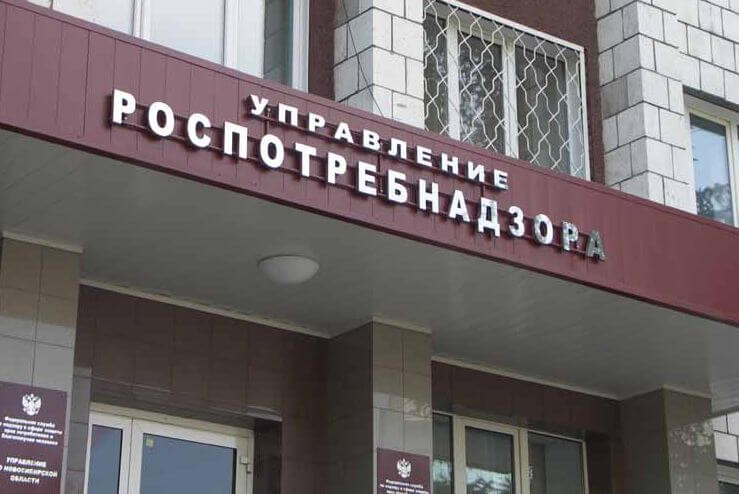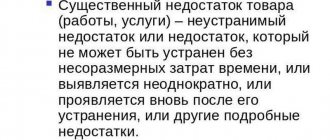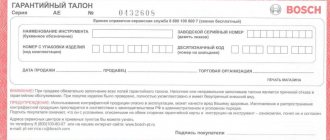What laws govern pricing?
The main legal guarantors of the buyer’s interests and defenders from unscrupulous sellers are the Federal Law “On the Protection of Buyer’s Rights” and the Civil Code of the Russian Federation.
Civil Code of the Russian Federation
Articles 426 and 492 of the Civil Code of the Russian Federation classify the retail sale of consumer goods as public contracts - agreements with an indefinite number of persons. According to the same code, any public organization that sells goods and offers services to the public must:
- establish a uniform price for all buyers/consumers (except for those who are legally entitled to benefits);
- conclude an agreement with everyone who wishes;
- When drawing up contracts, do not give any preference to anyone.
Important: the display of goods at a certain price in the sales area, on display cases, racks and other places of sale is nothing more than a public offer - that is, an offer to a potential buyer to conclude an agreement. Except for the cases specified in Article 494 of the Civil Code of the Russian Federation, when the seller clearly indicates that a particular product is not for sale.
The law obliges any seller to provide reliable information regarding the item of trade (product). And if the information the buyer needs is not communicated, the seller is obliged to compensate for losses incurred in connection with this (Article 495 of the Civil Code of the Russian Federation). That is, at a minimum, return the cost of the goods if the contract has already been concluded (and the stamped cash receipt indicates exactly this).
Law on Consumer Protection"
The seller must also provide reliable information about the goods being sold according to the Law “On the Protection of Consumer Rights” (Article 10). There is a whole information list published there, which the seller must adhere to. Any trading structure bears responsibility for violation of consumer rights.
The legislation also provides for deadlines within which the seller must satisfy the buyer’s legal requirements. So, for example, a reduction in product value, a refund and compensation for losses incurred due to the provision of false information - all this must be satisfied no later than 10 days after the presentation of consumer demands, in accordance with Article 22 of the Federal Law of the Russian Federation.
The law (Article 12 of the Federal Law of the Russian Federation) also provides for compensation for damages for refusal (illegal, of course) from the sale of goods. And also a refund plus compensation for losses if the purchased product is returned. And when such issues are resolved in court, the buyer may also be compensated for moral damages (Article 15 of the Federal Law of the Russian Federation).
The price of the product
A price tag is not just a piece of paper with the name of a product and its price. This is a document. In accordance with Art. 494 of the Civil Code of the Russian Federation (link), by placing a price tag on a product, the seller makes an official offer to buy it to anyone who agrees. Under the conditions specified in the price tag.
In addition, Art. 10 of the Law “On the Protection of Consumer Rights” (link) states that the seller’s responsibility includes timely informing the consumer about goods and their prices. If the buyer agrees to purchase the product, the seller must sell it for exactly the amount indicated on the price tag.
Naturally, if we are talking about a small amount, most buyers will remain silent or make a remark and still pay for the goods. If we are talking about a significant difference in price, then the majority of citizens who notice this difference will simply refuse to buy it, pay for the remaining purchases and leave.
But the fact is that supermarket employees are often in no hurry to correct the discovered error: cashiers continue to inform attentive customers that they “didn’t have time to change the price tag,” and charge it to the inattentive at an inflated price. At the same time, the hall staff are doing completely different things and move on to price tags only after a fairly long period of time.
Rules for the sale of certain types of goods
The rules for the sale of goods are regulated in Government Decree No. 55. And it clearly states:
- requirements for information provided to customers;
- availability of price tags, as well as requirements for the volume and reliability of information displayed on them;
- nuances of the sale of certain goods.
According to paragraph 11 of the above-mentioned Resolution, the seller must convey the price of the product to the buyer in an accessible and visual form. In addition, the price should be the same for all buyers (with the exception of those with official benefits). And in addition to the actual cost, the price tags must also indicate the name and type of product.
At each retail outlet there should be a “Book of Complaints and Suggestions” that is freely available (as stated in paragraph 8 of the Trade Rules). Or it must be presented upon the buyer’s first request.
Rules for issuing price tags: legislative framework and new requirements
In fact, the procedure for registering a label on which the price and other properties of the product are indicated is established using two fundamental documents. The main one is the law on the rules for the sale of certain types of goods. It was its text that was modified, after which new requirements for the design of price tags began to apply in 2020. The second document is the law “On the Protection of Consumer Rights”.
New standards
The bill obliges sellers to display identical price tags, which should contain the cost, name of the product and variety (if any). There are no strict requirements for what form the label must be printed on. This may be paper, board or electronic media, but the buyer must have access to all information.
Now there is no need to certify every price tag (with the exception of goods sold from a tray). Each owner of a retail outlet must have a price list signed by the manager. The client, according to legal regulations, has the right to demand confirmation of the authenticity of the product.
If there is a markdown or there are additional discounts on a product, you are allowed to stick the old price tag on it or stick a new one directly on it. You cannot cross out the price and write a new one. When marking down a product with a defect, information about the defect is indicated on it. All price tags are drawn up in the same style.
What do you have the right to demand if prices on price tags and receipts do not match?
If the buyer discovers that the price of the product printed on the receipt does not correspond to what was indicated on the price tag, he can:
- Demand that the selected product be sold to him at the price indicated on the price tag.
- Return the purchased product, demanding not only compensation for its cost, but also for losses caused by incorrect information.

Important: if we talk about the losses that a buyer may incur as a result of divergent information on the receipt and the price tag, the most striking example would be a consumer or trade loan issued in connection with a specific purchase. Namely, interest plus commissions associated with additional banking services. In addition, transportation costs incurred during delivery of the goods, as well as the cost of related products, are considered losses.
As for the sale of a specific product name at the declared value (the price indicated on the price tag), such an obligation arises from the seller due to the impossibility of refusing a public agreement (offer), arising from Article 426 of the Civil Code of the Russian Federation, where the price of the product is called an essential condition.
What information is the seller required to provide?
Requirements for price tags are established by law. Information is provided in Russian. According to the new rules, the information carrier must contain the following data:
- product name;
- variety (if present);
- weight;
- information about GMO content (if it is a product);
- the state where the goods were released;
- manufacturer information.

Mandatory information on price tags
The price list for food products must indicate the cost of the product per 100 g and 1 kg, for weight products - the unit of measurement. By law, the owner of a retail outlet can add additional information to the price tag. Other standards also apply for certain types of products:
- Items of clothing must be accompanied by labels indicating the size chart, height, and article number;
- price tags for equipment include information about the model and a brief description of technical properties;
- jewelry must have sealed labels; the price tag indicates the fineness, data on the type of precious metal and the use of stones;
- price tags for weapons contain information about its characteristics and a description of the model;
- The situation is different with printed publications. There is no need to stick a price tag on them containing all the information about the publisher. Most often, at bookstores, the price is marked with a pencil or a small sticker is attached that can be easily removed.
Read also: Tax deduction for pensioners
You can find out the full list of requirements for labels in the official text of the bill. We suggest downloading the law on the design of price tags using the following link.
Procedure for detecting price discrepancies on price tags and receipts in a store
The actions of a buyer who wants to protect his rights and their sequence directly depend on the actions of a particular seller (trade organization).
Collection of evidence
Any official claim is possible if there is evidence . Therefore, before making claims to the seller, you need to collect evidence of existing violations. Namely: keep the cash receipt and record (for example, take a photo on your phone) the price indicated on the price tag so that their discrepancy is documented. To make it even more convincing, you can photograph the price tag and receipt next to each other, or indicate the date and time on separate photographs.
When a camera or phone with a camera is not at hand, witnesses to what is happening can help. You just need to take their contact information and obtain consent to testify.
Presentation of demands
The fastest way, of course, is to resolve the issue immediately on the spot. The buyer makes a claim to the cashier regarding the discrepancy between the price in the receipt and on the price tag, and he invites the administrator or director of the store to resolve the issue (since he himself is not authorized to resolve monetary disputes and issues).
If the invited official is “savvy” in matters of law in his field, he will not aggravate the situation and resolve the conflict legally (return the buyer’s money or sell the goods at the price indicated on the price tag), as they say, “here, now.”
Important: references to “new” receipts, revaluation and other circumstances have no meaning. The trading organization (seller) is obliged to carry out its activities in strict accordance with the requirements of current legislation and its internal problems should not worry any of the buyers.
If an employee of the selling company refused to fulfill the buyer’s demands expressed orally, they must be duplicated in writing - in a book of complaints and suggestions, clearly stating the situation. There you also need to indicate contact information and indicate the deadline for considering the case and making a decision. The designation of the period should be based on those 10 days that are specified in Article 22 of the Federal Law of the Russian Federation (for reimbursement of costs, as well as losses).
The second option is to write a complaint on a separate piece of paper addressed to the administration and/or store owners. It would be more correct - in 2 copies, so that the second one - with a mark of acceptance - can be kept. If the provision of a complaint book or acceptance of an application was refused, you should complain to the relevant regulatory authorities.
Who should I complain to?
There are several instances for complaints against negligent sellers who refuse to provide a book of complaints and suggestions, as well as those who do not want to satisfy legitimate consumer demands regarding the discrepancy between the price in the receipt and on the price tag:
- Rospotrebnadzor;
- local administration;
- police;
- and finally the prosecutor's office.

And if you need detailed advice on what, to whom and how to write, then it can be obtained from local public consumer organizations.
One of the most effective measures in such situations is a complaint filed with the territorial Rospotrebnadzor. After all, it is this body that directly controls the observance of consumer rights (under Article 40 of the Federal Law on the Protection of Consumer Rights). As soon as a complaint is received by this organization, an inspection will be immediately initiated, an order will be drawn up and a fine will be issued to the offending seller.
By the way, many branches of Rospotrebnadzor operate hotlines. And you can call there directly from the store.
As for the prosecutor's office, local authorities and supervisory services, their representatives can defend consumer interests in the courts.
Application requirements
When contacting government agencies, the buyer should be aware that there are a number of legal requirements for such requests. These requirements are spelled out in Article 7 of the Federal Law “On the procedure for considering appeals from citizens of the Russian Federation .” Such statements must contain:
- Full official name of the recipient authority.
- Full name of the authorized person or official to whom the appeal is sent.
- Full name of the applicant.
- Address for sending the response (you can specify postal or email).
- A detailed description of the essence of the appeal.
- Applicant's signature and date.
You can download a standard sample application to Rospotrebnadzor here.
Important: anonymous applications to government agencies will not be considered. And a package of documents and evidence must also be attached to the complaint. This could be a photo of the receipt and price tag (general or separate); recordings of negotiations with representatives of the seller; response to a complaint addressed to the administration of a retail outlet, etc.
The law gives the government body 30 days to respond to citizens’ appeals.










